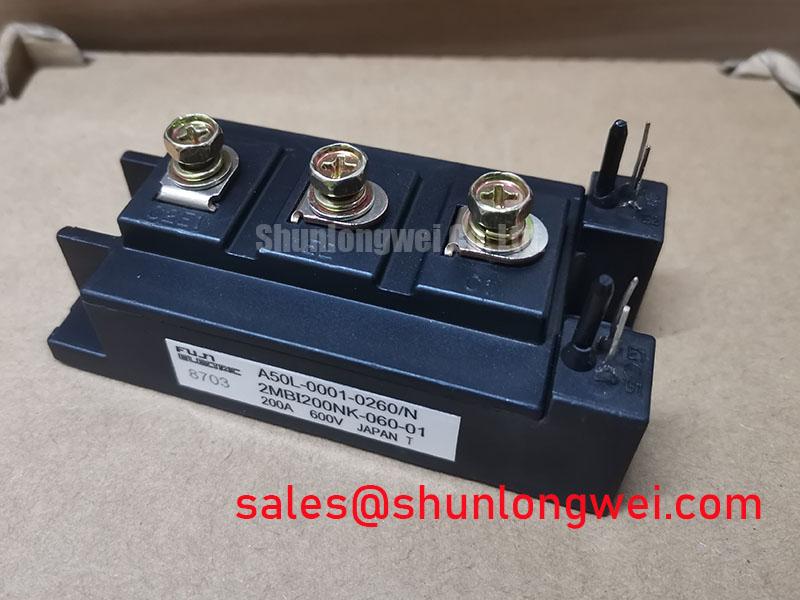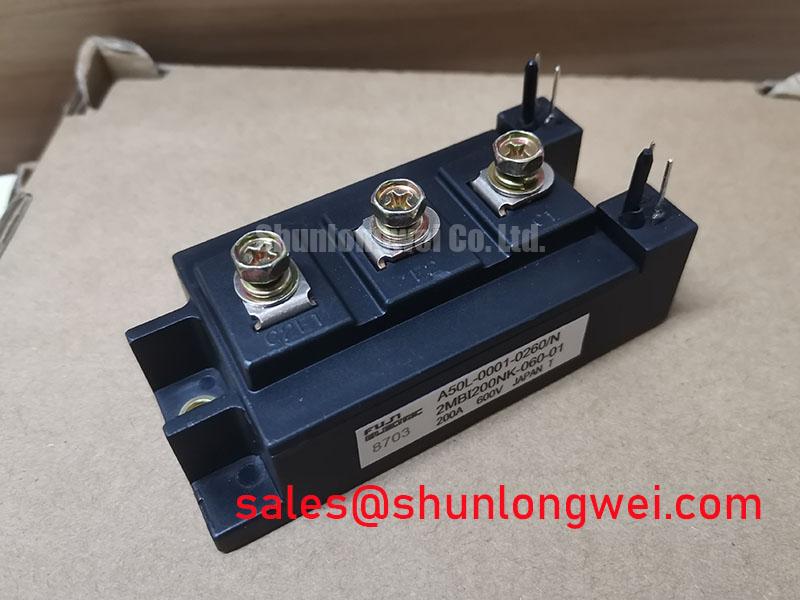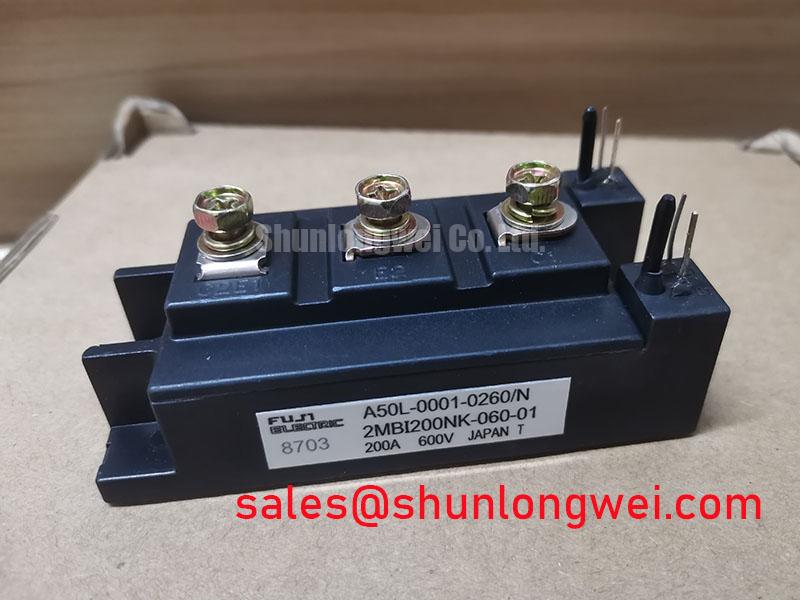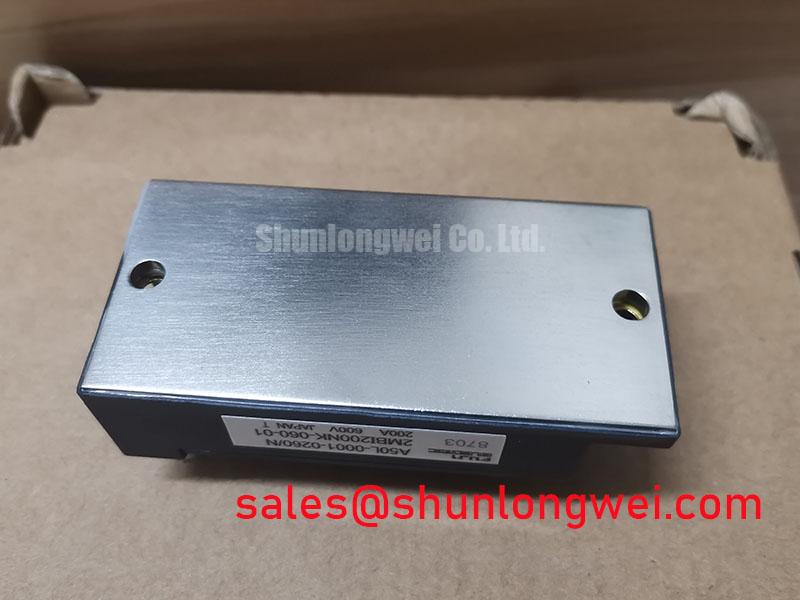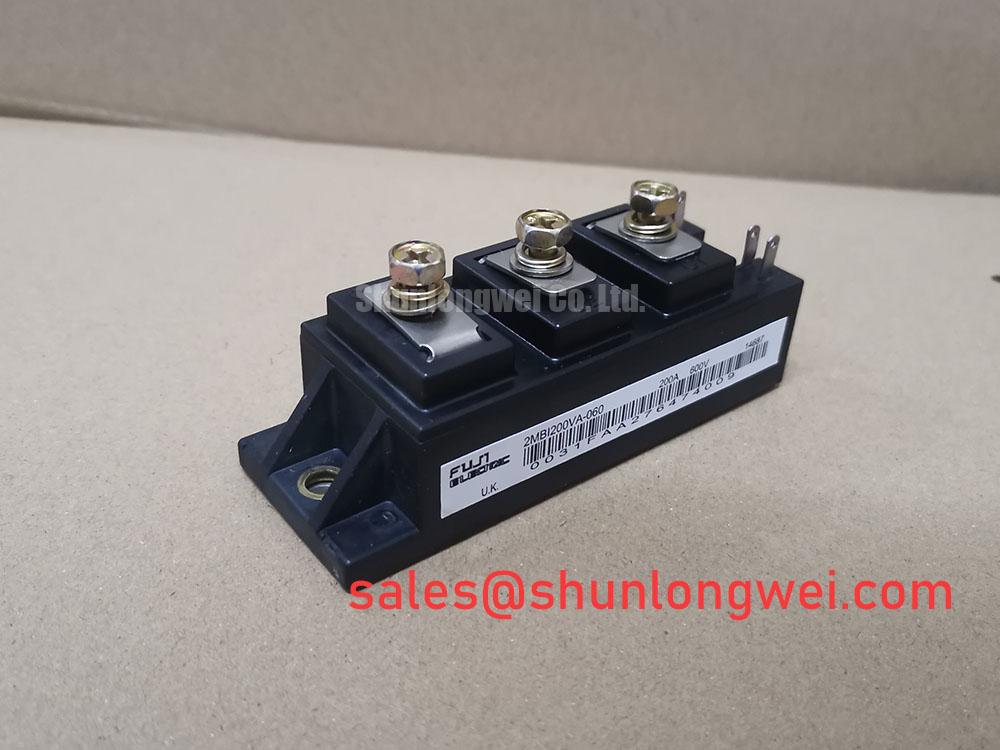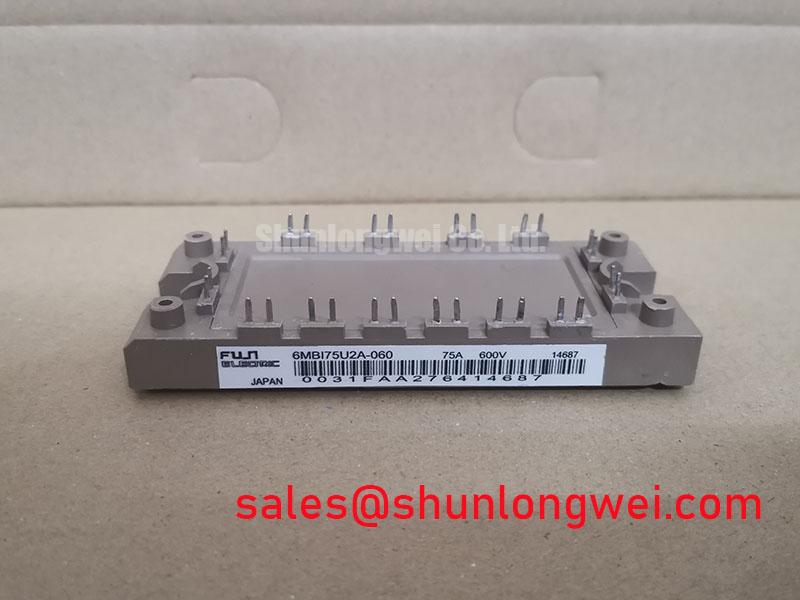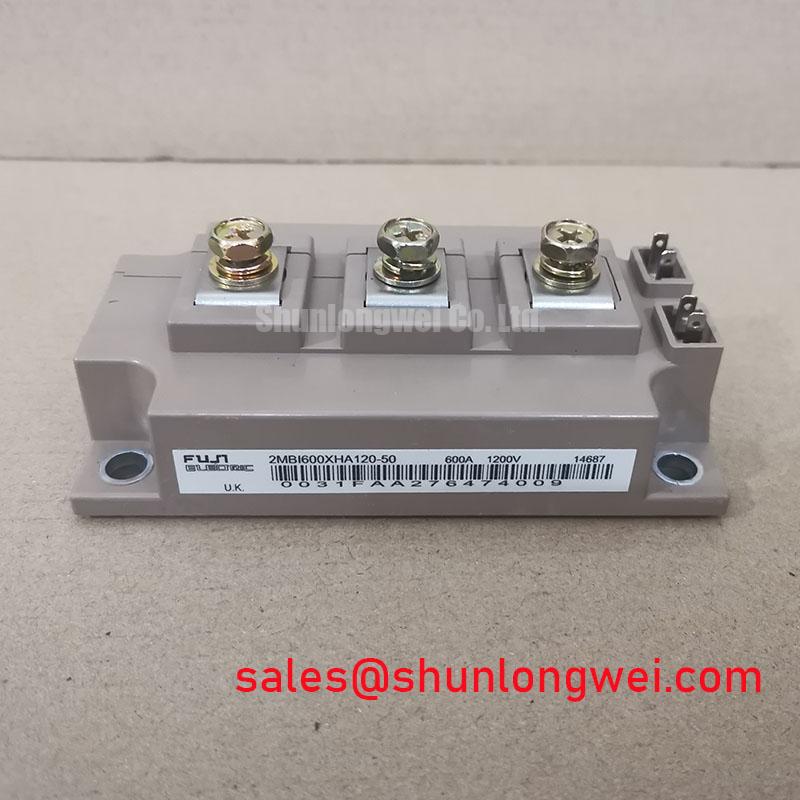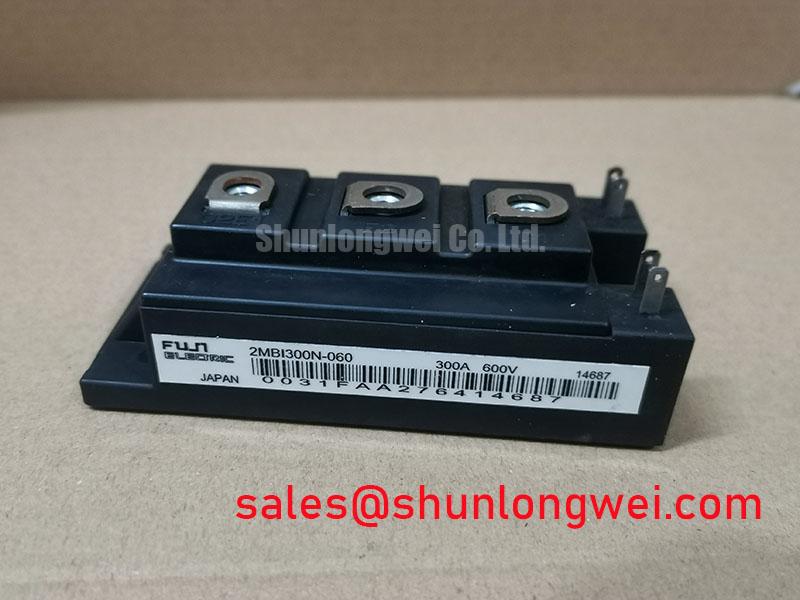Content last revised on November 21, 2025
2MBI200NK-060-01 | 600V 200A Dual IGBT Module for High-Efficiency Power Conversion
Introduction: Redefining Efficiency in Power Electronics
Engineered for Minimal Power Loss and Enhanced Power Density
The Fuji Electric 2MBI200NK-060-01 is a 600V, 200A dual IGBT module engineered to deliver superior efficiency in high-frequency power conversion systems. With its core specifications of 600V | 200A | VCE(sat) 2.1V (typ), this module directly addresses the critical engineering challenge of minimizing power loss. Key benefits include a significantly reduced thermal footprint and the capability to design more compact, power-dense systems. By integrating advanced N-channel IGBTs with a fast recovery diode (FRD), this component provides a robust solution for developers looking to optimize performance in demanding switching applications. This module is the best fit for high-frequency motor drives and SMPS where minimizing total power loss is a primary design objective.
Application Scenarios & Value
Achieving System-Level Benefits in High-Frequency Motor Drives
In the design of modern Variable Frequency Drive (VFD) systems, particularly those operating above 15 kHz, switching losses can quickly become the dominant factor in overall inefficiency. The engineering challenge is to increase the Pulse Width Modulation (PWM) frequency to reduce motor noise and improve current ripple, without incurring a prohibitive thermal penalty. The 2MBI200NK-060-01 directly confronts this issue. Its fast fall time (tf) of 0.4µs and reverse recovery time (trr) of 0.15µs significantly reduce the energy dissipated during each switching event (Eon/Eoff). This allows designers to push operating frequencies higher, which in turn enables the use of smaller, lighter, and more cost-effective inductors and capacitors in the system, directly contributing to a higher overall power density. What is the primary benefit of its fast switching? Reduced energy loss, enabling more compact and efficient system designs.
While the 2MBI200NK-060-01 is optimized for 200A applications, for systems demanding greater current capacity within the same voltage class, the related 2MBI300N-060 offers a higher current rating, providing a scalable solution path.
Key Parameter Overview
Decoding the Specs for Low-Loss Performance
The technical specifications of the 2MBI200NK-060-01 are centered on achieving a balance between low conduction losses and fast switching characteristics. The parameters below highlight the module's suitability for high-performance inverter and converter designs.
| Parameter | Symbol | Condition | Value |
|---|---|---|---|
| Collector-Emitter Voltage | VCES | Tj = 25°C | 600 V |
| Continuous Collector Current | IC | Tc = 80°C | 200 A |
| Collector-Emitter Saturation Voltage | VCE(sat) | IC = 200A, VGE = 15V | 2.1 V (Typ) / 2.7 V (Max) |
| Gate-Emitter Voltage | VGES | ±20 V | |
| Turn-on Time | ton | Inductive Load | 0.50 µs (Typ) |
| Turn-off Time | toff | Inductive Load | 0.70 µs (Typ) |
| Diode Reverse Recovery Time | trr | IF = 200A | 0.15 µs (Typ) |
| Thermal Resistance (Junction to Case) | Rth(j-c) | IGBT | 0.17 °C/W |
| Operating Junction Temperature | Tj | +150 °C |
Technical Deep Dive
A Closer Look at the Interplay Between Conduction and Switching Losses
Optimizing an IGBT module is a game of managing two primary sources of energy loss: conduction and switching. The 2MBI200NK-060-01's design reflects a targeted approach to minimizing both. The low VCE(sat) of 2.1V is analogous to reducing the friction on a continuously moving object. Just as lower friction means less energy is wasted to keep the object sliding, a lower VCE(sat) means less power is dissipated as heat while current flows through the device in its 'on' state. This is the dominant loss factor in low-frequency applications.
Conversely, the module's fast switching times address the energy lost during the transitions between on and off. This is akin to the energy spent accelerating a car to cruising speed and then braking it back to a stop. The faster and more efficiently you can perform these transitions, the less fuel is wasted. In the same way, the rapid turn-on and turn-off characteristics of the 2MBI200NK-060-01, along with the fast-recovery diode, minimize the time the device spends in a high-power dissipation state, thereby reducing switching losses that are critical in high-frequency designs like Switching Power Supplies (SMPS).
Industry Insights & Strategic Advantage
Meeting Efficiency Standards and Power Density Demands
The push for higher energy efficiency is no longer just a design preference; it is a strategic imperative driven by regulations and market demands. Standards such as IEC 61800-9-2 for VFDs define stringent efficiency classes (e.g., IES2), compelling engineers to minimize every watt of loss. Selecting a component like the 2MBI200NK-060-01, with its inherently low total power loss, is a direct step towards achieving compliance and offering a more competitive, energy-efficient end product. This efficiency has a cascading effect, reducing the requirements for complex heatsink design and potentially eliminating the need for higher-cost cooling solutions, which simplifies the overall system architecture and lowers the bill of materials (BOM).
Frequently Asked Questions (FAQ)
How does the typical VCE(sat) of 2.1V directly influence the thermal management design?
A lower VCE(sat) directly reduces conduction losses (P_cond = VCE(sat) * Ic). With less power being converted into heat under load, a smaller, more cost-effective heatsink can be used to maintain the junction temperature within safe operating limits. This also improves overall system reliability and power density.
What is the primary benefit of the module's 0.15µs reverse recovery time (trr) in an inverter circuit?
The fast reverse recovery time of the integrated free-wheeling diode is crucial for reducing switching losses, especially in the opposing IGBT in the half-bridge configuration. A shorter trr reduces the 'shoot-through' effect during commutation, minimizing power spikes and improving the efficiency and reliability of hard-switching topologies.
Is the 2MBI200NK-060-01 suitable for hard-switching topologies?
Yes, its characteristics, including fast turn-on/turn-off times and a robust Fast Recovery Diode (FRD), are specifically optimized for hard-switching applications like motor drives and switching power supplies where efficiency and reliability are paramount.
How does the module's internal dual IGBT (half-bridge) configuration simplify the design of a three-phase inverter?
The dual, or half-bridge, configuration integrates two series-connected IGBTs in a single package. This is the fundamental building block for a three-phase inverter. Using three 2MBI200NK-060-01 modules provides a compact, layout-optimized, and performance-matched solution for the six switches required, simplifying the power stage design, reducing parasitic inductance, and streamlining assembly compared to using twelve discrete components.
Strategic Component Selection for Future-Proof Designs
Integrating the 2MBI200NK-060-01 into a power system is a strategic decision that aligns with the long-term industry trends of electrification, efficiency, and miniaturization. Its performance characteristics provide the engineering foundation needed to not only meet today's application requirements but also to build a competitive advantage in next-generation power electronics that demand lower energy consumption and higher power density.

